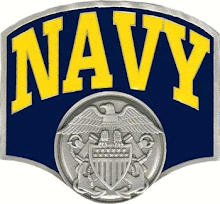Chocolate A Bittersweet Saga of Dark and Light
By Mort Rosenblum
Comments -
1. A half millenium ago, a canoe full of Indians rowed out to an ungainly floating house anchored at Guanaja, a palm-flecked island off thre Honduran coast. Christopher Columbus had stopped by on the way home from his fourth and last trip to America, still hopeful he might find useful riches beyond an expanse of alien real estate. The Indians offered what he took to be a handful of shriveled almonds. He was mystified when a few dropped to the bottom of their canoe, his son reported later, and "they scrambled for them as though they were eyes that had fallen out of their headfs." But Columbus's Mayan was no better than the natives' Spanish. He returned to Spain empty handed.
2. Beyond industrial candymakers with brands we all recognize, chocolate comes in two flavors. There are those who make chocolate from beans, from the Swiss-based behemoth Barry Callebaut to such specialists as Valrhona. And there are artisansknown as fondeurs - the word means "melters" - who turn this base chocolate into high art.
3. Spain dominated the early cacao trade. As demand increased for chocolate in Europe, kings in Madrid kept close watch on their lucrative crop. After a century, though, their monopoly was threatened. Portuguese colonizers grew cacao in Brazil, and Dutch sailors also brought trees to Southeast Asia.
4. Chocolate, coffee, and tea all captivated Europe at about the same time, and each made its impact. Coffee, the cheapest, was a man's drink, taken in clublike public houses along with another exotic import, tobacco. Tea was twice as expensive as coffee, with more genteel following among both males and females. But, after all, it was only hot water and wet leaves. Chocolate, at double the price of tea, was the noble newcomer.
5. In 1875, after eight years of trying, the Swiss inventor Daniel Peter worked out a way to combine milk with chocolate. He was helped by Henri Nestle, whose dabbling in dairy science evolved into the largest food empire on earth. No 0ne had been able to mix fat in chocolate with water in milk. Nestle condensed milk, eliminating the water.
Questions -
1. Since Columbus' men loved the chocolate so much, why didn't they try to find out what it was or try to get some to bring back with them?
2. What made chocolate such a big deal throughout Europe?
3. What made Nestle think that adding milk to chocolate would make it taste better?
4. Why is chocolate compared to coffee and tea?
Vocabulary -
1. artisans - A skilled manual worker; a craftsperson.
2. alchemy - a form of chemistry and speculative philosophy practiced in the Middle Ages and the Renaissance and concerned principally with discovering methods for transmuting baser metals into gold and with finding a universal solvent and an elixir of life.
3. lucrative - profitable; moneymaking; remunerative: a lucrative business.
Literary Terms -
1. Setting - most of Europe and the United States.
2.Exposition - Europeans fight to gain control of the chocolate market.
Outline -
Christopher Columbus is offerred chocolate by the Indians while on his last trip home from America. Then chocolate made its way throughout Europe and America where it was transformed in many ways to become a very high commodity. Most countries couldn't keep up with the demand the people had for chocolate.
Subscribe to:
Post Comments (Atom)

No comments:
Post a Comment